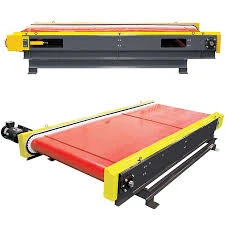Properly disposing of broken electronics is essential for both environmental health and legal compliance, given the hazardous materials that many gadgets contain. Here, we'll guide you through expert and reliable methods for getting rid of defunct electronic devices, ensuring you act responsibly and knowledgeably.

First, it's crucial to understand why standard trash disposal is not an option for broken electronics. Many electronic devices contain harmful substances such as lead, mercury, and cadmium. These materials can leach into the soil and water, posing environmental and health risks. Moreover, in many jurisdictions, improper disposal of electronics is illegal and can result in significant fines.
The initial step in the responsible disposal of broken electronics is determining whether the item can be repaired or reused. While a device may seem irreparable, professional repair shops often possess the expertise to breathe new life into it. This approach not only conserves resources but also saves you money. Before considering disposal, consult a reputable repair service to evaluate whether the device can be restored or if any parts can be salvaged.

If repair is not feasible, explore the option of electronic recycling facilities. These specialized centers are equipped to handle electronic waste (e-waste) safely, ensuring that hazardous materials are properly managed. Often certified by environmental protection agencies, these facilities dismantle and sort electronic components for recycling and safe disposal. Engaging with certified recyclers guarantees adherence to health and environmental guidelines, adding a layer of credibility and trustworthiness to your disposal process.
Moreover, many electronics manufacturers and retailers offer take-back programs or recycling incentives. Brands like Apple, Samsung, and Best Buy have initiatives encouraging customers to return old products for proper recycling. These programs often provide discounts on new purchases, contributing to a circular economy model. Participating in manufacturer take-back schemes not only assures compliance with waste disposal regulations but also aligns with brands committed to sustainable practices.
how do you dispose of broken electronics
Community e-waste collection events offer another avenue for disposing of broken electronics. These events are typically coordinated by local municipalities or environmental organizations and provide households and small businesses a convenient way to discard large quantities of e-waste. Research upcoming events in your area and ensure you adhere to the event guidelines for what can be collected.
For items like batteries, which often have specific disposal requirements due to their chemical composition, separate handling protocols must be followed. Many countries mandate that batteries be recycled independently of other e-waste to prevent environmental contamination. Specialized collection bins found at retail locations or community centers are often available for public use.
Data security is another vital consideration. Before recycling or disposing of any electronic device, ensure all personal data is removed. This can involve resetting devices to factory settings or using dedicated data-wiping software to prevent identity theft or data breaches. Always verify that your personal information has been securely deleted before parting with the device.
In summary, the ethical and responsible disposal of broken electronics requires a nuanced approach combining professional guidance, regulatory compliance, and community involvement. By prioritizing repair, utilizing certified recycling methods, participating in take-back programs, and attending local e-waste events, you uphold environmental integrity and contribute to global sustainability efforts. These practices underscore the importance of treating electronic disposal as an opportunity to protect our planet while reinforcing trust in how we manage technological waste.


